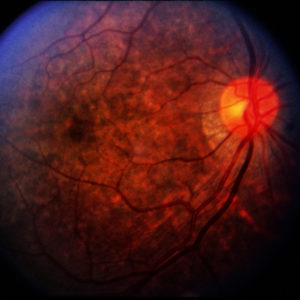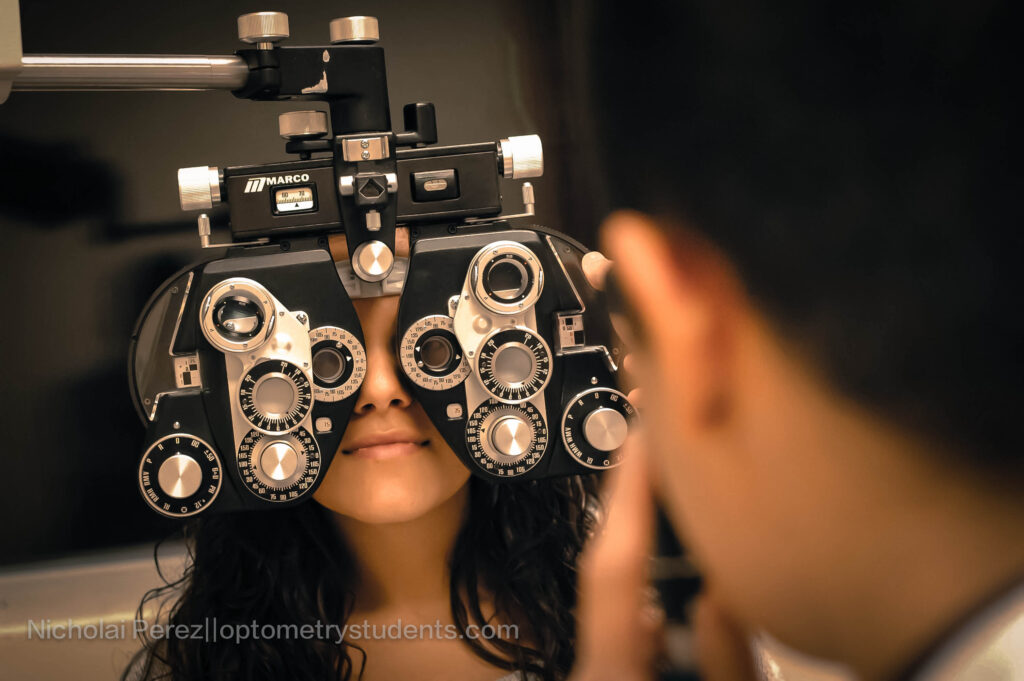Kearns-Sayre Syndrome
My ocular disease professor once told our class, “It’s not rare if it’s in your chair.” He explained that if a patient manifested signs or symptoms of diseases such as uncommon syndromes, retinal abnormalities, and obscure parasitic or fungal infections in the retina, it was up to us as the doctor to know how to treat them.

When I began my first week of rotations, I came across my first case of Kearns-Sayre Syndrome. My mind went blank and I tried thinking of how this degeneration affected vision and what possible treatments there were to improve the patient’s activities of daily living.
Kearns-Sayre Syndrome is a mitochondrial disease that affects oxidative phosphorylation in the body. Clinically, ocular Kearns-Sayre Syndrome can manifest in two ways: The retina develops a salt-and-pepper degeneration in the posterior pole and mid-periphery. Similarly to retinitis pigmentosa, Kearns-Sayre Syndrome can cause night blindness, but contrarily, these patients do not eventually lose central vision.
Early on, the patient may report trouble with eye movement and elect to turn his or her head for tracking. This is due to the development of a progressive external ophthalmoplegia, which is often the first sign of the disease. Patients with Kearns-Sayre Syndrome may also exhibit bilateral ptosis and may benefit from a ptosis crutch.

Those patients with Kearns-Sayre Syndrome may also exhibit systemic manifestations such as short stature, cerebellar ataxia, hearing loss, diabetes, and other endocrine abnormalities. Patients with Kearns-Sayre Syndrome often develop ocular manifestations of the condition early in life before their 20’s. Some patients with Kearns-Sayre Syndrome may also have developmental delays.
How do you treat Kearns-Sayre Syndrome? Because there is no risk for neovascularization or progressive deterioration of the retina, the best course of treatment is to monitor the patient with yearly eye exams. Educating the patient and potential family members on the etiology and prognosis of the disease can help enlighten and empower patients about potential future presentations of the condition.
If the patient has not been to a cardiologist, it is important to refer out for a cardiac conduction evaluation. For patients with more critical peripheral retinal degenerations, low vision devices, counseling services, or special orientation and mobility training may also be beneficial. Mental health treatment and counseling may be warranted for patients with loss of visual function and decreased activities of daily living.
It is important to recognize signs and symptoms of Kearns-Sayre Syndrome to direct patients appropriately for consultations as well as educate them on a future visual prognosis. Although there are less than 200 cases that have been reported in the United States, it is always good to remember, “It’s not rare if it’s in your chair.”
- This image was originally published in the Retina Image Bank. David Callahan, MD. Kearns-Sayre/RP. Retina Image Bank. 2014; Image Number 21907. © the American Society of Retina Specialists.


